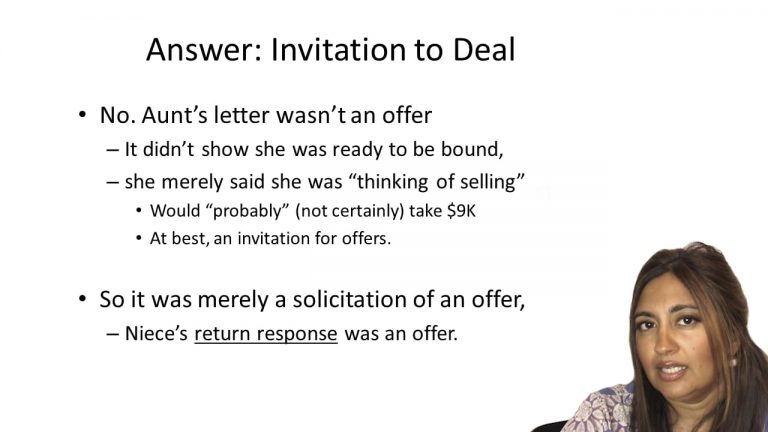SmartBrief
Confirm favorite deletion?
Contracts Keyed to Ayres
Minneapolis & St. Louis Railway Co. v. Columbus Rolling-Mill Co.
Citation:
119 U.S. 149.Facts
The Plaintiff (Minneapolis & St. Louis Railway) contacted the Defendant (Columbus Rolling-Mill) looking to buy rails and asking for a quote. The Defendant, on December 8, sent a letter making a clear offer for the purchase of 2000 to 5000 tons of rails for $54.00 per ton. The letter stated that notice of the Plaintiff’s acceptance should reach Defendant prior to December 20. On December 16, the Plaintiff sent a telegram ordering 1200 tons of rails, accompanied by a letter repeating the same and requesting a contract. On December 18, the Defendant rejected the Plaintiff’s December 16 order. On December 19, Plaintiff entered an order for 2000 tons as per the terms in the December 8 offer. The Defendant did not acknowledge the order and did not despite continuous inquiry by the Plaintiff. The Plaintiff sued.
Only StudyBuddy Pro offers the complete Case Brief Anatomy*
Access the most important case brief elements for optimal case understanding.
*Case Brief Anatomy includes: Brief Prologue, Complete Case Brief, Brief Epilogue
- The Brief Prologue provides necessary case brief introductory information and includes:
Topic:
Identifies the topic of law and where this case fits within your course outline.Parties:
Identifies the cast of characters involved in the case.Procedural Posture & History:
Shares the case history with how lower courts have ruled on the matter.Case Key Terms, Acts, Doctrines, etc.:
A case specific Legal Term Dictionary.Case Doctrines, Acts, Statutes, Amendments and Treatises:
Identifies and Defines Legal Authority used in this case.
- The Case Brief is the complete case summarized and authored in the traditional Law School I.R.A.C. format. The Pro case brief includes:
Brief Facts:
A Synopsis of the Facts of the case.Rule of Law:
Identifies the Legal Principle the Court used in deciding the case.Facts:
What are the factual circumstances that gave rise to the civil or criminal case? What is the relationship of the Parties that are involved in the case.Issue(s):
Lists the Questions of Law that are raised by the Facts of the case.Holding:
Shares the Court's answer to the legal questions raised in the issue.Concurring / Dissenting Opinions:
Includes valuable concurring or dissenting opinions and their key points.Reasoning and Analysis:
Identifies the chain of argument(s) which led the judges to rule as they did.
- The Brief Prologue closes the case brief with important forward-looking discussion and includes:
Policy:
Identifies the Policy if any that has been established by the case.Court Direction:
Shares where the Court went from here for this case.
Topic Resources
Topic Outline

 11m 57s
11m 57s